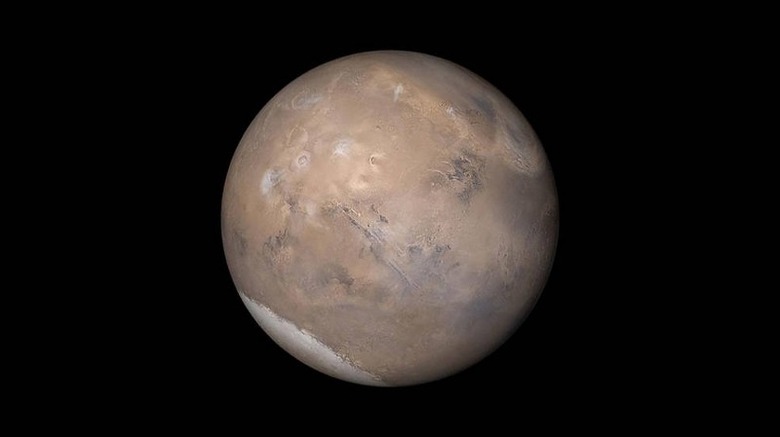If There's Life On Mars, This Is How We'll Finally Find It
- There is no evidence that life currently exists on Mars, and its surface is not considered habitable due to radiation and temperature extremes.
- Beneath the surface, however, organisms could still exist.
- Future missions to investigate this possibility would need to take subsurface samples for analysis.
As far as any of us know, there's not living on Mars. When Mars rovers analyze the dusty soil of the surface they've found clues that suggest life may once have existed on the surface, but that's about it. The surface of Mars today is hostile to life, with extreme temperatures and radiation due to the planet's weak atmosphere. But beneath the surface? We still don't know.
Now, in a new study published in Scientific Reports, Dimitra Atri of the Center for Space Science at NYU Abu Dhabi argues that conditions just beneath the surface of the planet may be far more favorable for life to persist.
To date, the Mars rover missions that have made it to the Red Planet have focused almost entirely on the landscape and science of the surface. Beneath the surface, however, offers some comforts that organisms on the surface wouldn't be afforded.
For starters, Mars has water — mostly in the form of ice or ultra-salty brine mixtures — beneath its surface. If we look much farther back in time, Mars is thought to have once had an abundance of water on its surface. The slow transition from a watery world to a dusty planet with water reserves buried beneath the crust may have provided ancient Martian organisms enough time to adapt to life underground.
"There is growing evidence suggesting the presence of aqueous environment on ancient Mars, raising the question of the possibility of life in such an environment," the study reads. "Subsequently, with the erosion of the Martian atmosphere resulting in drastic changes in its climate, surface water disappeared, shrinking habitable spaces on the planet, with only a limited amount of water remaining near the surface in form of brines and water–ice deposits. Life, if it ever existed, would have had to adapt to harsh modern conditions, which include low temperatures and surface pressure, and high radiation dose."
Atria theorizes that the intense radiation the planet endures may create a "chemical disequilibrium" that organisms could provide energy for organisms that are still hiding beneath the surface. To be clear, there's no evidence that this is actually the case, but the fact that it may be possible is enough of a reason to consider investigating it.
NASA's Mars Perseverance rover will be tasked with gathering samples of the Martian surface for analysis back on Earth at a later date. It will also be equipped with advanced scientific equipment to perform its own analysis of samples it snags. Whether it will be able to detect life, however, remains to be seen.
